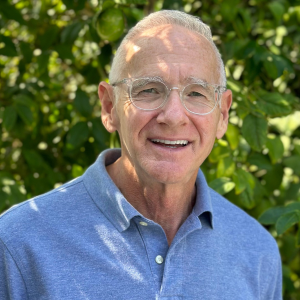My family’s meeting with Antibiotic Resistance and ESBL Klebsiella pneumoniae
My Story: Pernilla Rönnholm
In 2011, I eagerly anticipated the arrival of our twins. With a family history rich in twin births, my worries were minimal, given that both my father and I were twins, and previous pregnancies had proceeded smoothly.
However, during my 25th week of pregnancy, my water unexpectedly broke, leading to an immediate admission to the hospital. It was there that they discovered I had contracted an infection of some kind, prompting the administration of antibiotics for the initial two-day period. For three weeks I was bedridden with different complications before my two girls, Freya and Kirsty, were born at 28 ½ weeks. Given that they were born three months premature, my newborns were admitted to the Neonatal Intensive Care Unit (NICU) and provided with CPAP (Continuous Positive Airway Pressure) support to assist with their breathing. This additional measure aimed to provide them with the necessary respiratory assistance they required at such an early stage of development.
On the fourth day, I received a phone call notifying me about Kirsty’s deteriorating condition. She was displaying signs of distress and had started receiving medication. The medical staff assured us that there was no immediate need for us to rush to the hospital, suggesting that we could visit in the morning. However, a few hours later, we received another call informing us that Freya was also experiencing similar signs of stress and had been placed on medication.

Kirsty’s last lullaby
As the days passed, Kirsty and Freya’s condition deteriorated while the doctors tirelessly searched for the cause of their decline. Kirsty’s condition worsened with each passing day, leaving me with little recourse but to stand by her incubator, talking to her in the hopes of a miraculous improvement.
I was no longer allowed to have her on my chest “kangaroo style”, as she was very ill. Parents and other children in the same hall were taking tests to see if there was some sort of infection spreading in the NICU. I remember asking how long it would take before we got the answer and they said, “five days”. For some reason I just knew that would be far too late.
By the seventh day, the doctors delivered the grim news that Kirsty was battling sepsis, emphasizing the gravity of her condition and expressing uncertainty about her chances of survival. They offered us the option of an emergency christening, which we promptly arranged. Kirsty lay swollen in her incubator, her delicate state rendered any physical contact agonising for her. I was forbidden from touching her, fully aware of the intense discomfort it would cause her.
During that fateful night, the doctor informed us that it was time to discontinue life support. The sepsis had ravaged Kirsty’s entire body, except for her brain, leaving her with no chance of survival. On the eighth day, Kirsty took her final breath while resting on my chest, her fragile form cradled against me, as I softly sang “Twinkle, Twinkle Little Star.”
From that moment my life was divided into “before” and “after” Kirsty’s death. Life forever changed. I was later told that the last sense that disappears when dying is our hearing, so I was very happy knowing that she could hear me singing when she died. Knowing I was there for her until the very end.

Understanding ESBL Klebsiella pneumoniae as a mother and family
The doctor telling us to turn off the life support machine told me that Freya and Kirsty were given different treatments. Kirsty received two different antibiotics and Freya received four different antibiotics and that was why Freya potentially survived.
Upon Kirsty’s passing, we discovered that I had been infected with ESBL Klebsiella pneumoniae, a bacterial strain that was transmitted to my daughters during their birth, eventually leading to sepsis. Within the same room, numerous children had contracted ESBL Klebsiella pneumoniae, but tragically, Kirsty was the only one who succumbed to its effects.
In simple terms, ESBL Klebsiella pneumoniae refers to a type of bacteria called Klebsiella pneumoniae that has developed a special ability to resist certain antibiotics. ESBL stands for Extended-Spectrum Beta-Lactamase, which is an enzyme produced by the bacteria that can break down a wide range of antibiotics.
Klebsiella pneumoniae is a bacteria that can cause different types of infections, such as pneumonia and urinary tract infections. When it produces ESBL, it becomes resistant to many antibiotics commonly used to treat bacterial infections. This makes it harder to treat infections caused by this particular strain of bacteria.
Despite the heartbreaking loss of Kirsty, Freya continued to fight in the NICU. She exhibited resilience and, eventually, was granted permission to leave the hospital temporarily to attend her twin sister’s funeral. However, her journey was far from over. Three months later, Freya was readmitted to the hospital, requiring constant care and attention at home, with me assuming the role of her primary caregiver 24/7. The profound emotional impact of these events left me grappling with Post-Traumatic Stress Disorder (PTSD), a struggle that would take years to overcome.

Living my life on purpose
The loss of a child stands as one of the most formidable trials a parent can endure. Nevertheless, I find solace in the gratitude I hold for this profound experience, as it has illuminated the true value of life. With a keen awareness of life’s brevity and preciousness, fear no longer wields power over me. I wholeheartedly embrace each moment, relishing life to the fullest extent. Guided by my unwavering dedication, I am actively engaged in developing my non-profit organisation, Prematurföreningen Mirakel, which aims to educate others about this deeply significant subject. Additionally, I am committed to raising awareness about antibiotic resistance, providing support to families in the NICU, and extending a compassionate hand to those who have also suffered the loss of a child. Making all my three daughters proud.
The profound grief or trauma experienced by individuals affected by antibiotic resistance often renders them voiceless in advocating for change. Antibiotic resistance stands as one of the most perilous threats to society, and I have long emphasized that it is a silent pandemic, understood only by those directly impacted by its consequences.

Disclaimer: This story is shared with the permission of the individual(s) involved and is intended for educational and awareness purposes only. It does not represent medical advice and should not be used as a substitute for consultation with qualified healthcare professionals. While we encourage you to share the story in its original format, all rights are reserved by The AMR Narrative. Please do not reproduce, modify, or use any part of this story without prior written consent from The AMR Narrative. To request permission, please contact us here.

Pernilla Rönnholm
I am a positive, results-oriented problem solver with a holistic perspective, and I enjoy challenging myself, leading, and developing work while thinking outside the box. I have over 30 years of experience in administration, IT, project management, and organizational development within the Region Västra Götaland (VGR), with a good understanding of healthcare systems and procedures.
Privately, I have been advocating about antibiotic resistance working with the media since 2011 and have eight years of experience as a board chairman. I am also the founder of a non-profit organisation called Prematurföreningen Mirakel that supports the healthcare sector in innovative projects while engaging in debates about antibiotic resistance in the media.
With a focus on achieving my goals, I have studied project management at Stockholm University and IHM Business School.




